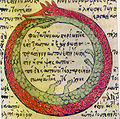Search results
Appearance
There is a page named "Basilinna" on Wikipedia
- Basilinna xantusii)Xantus's hummingbird (Basilinna xantusii), previously known as the black-fronted hummingbird, is a species in the "emeralds", tribe Trochilini of subfamily...9 KB (1,082 words) - 09:15, 7 April 2025
("king" or "emperor") in Italian Regina. Basilissa may also refer to: Basilinna or Basilissa, the ritual queen who was wed to Dionysus during the Anthesteria...
563 bytes (90 words) - 06:03, 19 March 2025
were assigned by lot. It is believed the archon basileus's wife, the basilinna, had to marry and have intercourse with the god Dionysos during a festival...
3 KB (284 words) - 09:25, 29 October 2024
offering Theatre Religious offices Amphictyonic league Archon basileus Basilinna Gerarai Hiereia Hierophant Hierophylakes Iatromantis Kanephoros Mystagogue...
34 KB (4,004 words) - 21:51, 2 April 2025
Lenaeum, which was closed for the rest of the year. The basilissa (or basilinna), wife of the basileus, underwent a symbolic ceremonial marriage to the...
213 KB (24,229 words) - 14:08, 7 April 2025
entrance of Dionysos into Attica, 3) the sacred marriage of Dionysos and the Basilinna and 4) the enthronement of Dionysos. These scenes are framed by crouching...
5 KB (674 words) - 14:04, 1 February 2025
"ruler" (translating archon, basileus, rex, tyrannos, etc.) or as "queen" (basilinna, basilissa, basileia or basilis; regina). Polybius originally understood...
60 KB (7,017 words) - 09:59, 2 April 2025
offering Theatre Religious offices Amphictyonic league Archon basileus Basilinna Gerarai Hiereia Hierophant Hierophylakes Iatromantis Kanephoros Mystagogue...
24 KB (2,883 words) - 00:41, 31 March 2025
Trochilini Abeillia Amazilia Amazilis Anthocephala Basilinna Campylopterus Chalybura Chionomesa Chlorestes Chlorostilbon Chrysuronia Cynanthus Elliotomyia...
20 KB (2,219 words) - 03:33, 8 February 2025
other duties. Fourteen in all, they were either sworn in by the Athenian basilinna or her husband, the archon basileus. One of their primary duties during...
2 KB (177 words) - 17:04, 28 November 2024
offering Theatre Religious offices Amphictyonic league Archon basileus Basilinna Gerarai Hiereia Hierophant Hierophylakes Iatromantis Kanephoros Mystagogue...
5 KB (393 words) - 20:58, 3 April 2025
offering Theatre Religious offices Amphictyonic league Archon basileus Basilinna Gerarai Hiereia Hierophant Hierophylakes Iatromantis Kanephoros Mystagogue...
37 KB (4,777 words) - 16:15, 11 March 2025
in the Bouleuterion in the Athenian Agora. Athens' ritual queen, the basilinna, underwent a ceremony of marriage to the god. She was assisted by the...
11 KB (1,172 words) - 22:22, 24 January 2025
offering Theatre Religious offices Amphictyonic league Archon basileus Basilinna Gerarai Hiereia Hierophant Hierophylakes Iatromantis Kanephoros Mystagogue...
24 KB (2,683 words) - 21:42, 3 April 2025
latirostris (A) Cuban emerald, Riccordia ricordii (A) White-eared hummingbird, Basilinna leucotis (A) Antillean crested hummingbird, Orthorhyncus cristatus (A)...
117 KB (11,266 words) - 11:08, 11 March 2025
offering Theatre Religious offices Amphictyonic league Archon basileus Basilinna Gerarai Hiereia Hierophant Hierophylakes Iatromantis Kanephoros Mystagogue...
9 KB (945 words) - 19:47, 17 January 2025
- See also: Basilinna English Wikipedia has an article on: basilinna Wikipedia basilinna (historical) The wife of the archon basileus in her ceremonial capacity
- Bacchus, which for the rest of the year was closed. The Basilissa, or Basilinna, wife of the Archon Basileus for the time, went through a ceremony of












